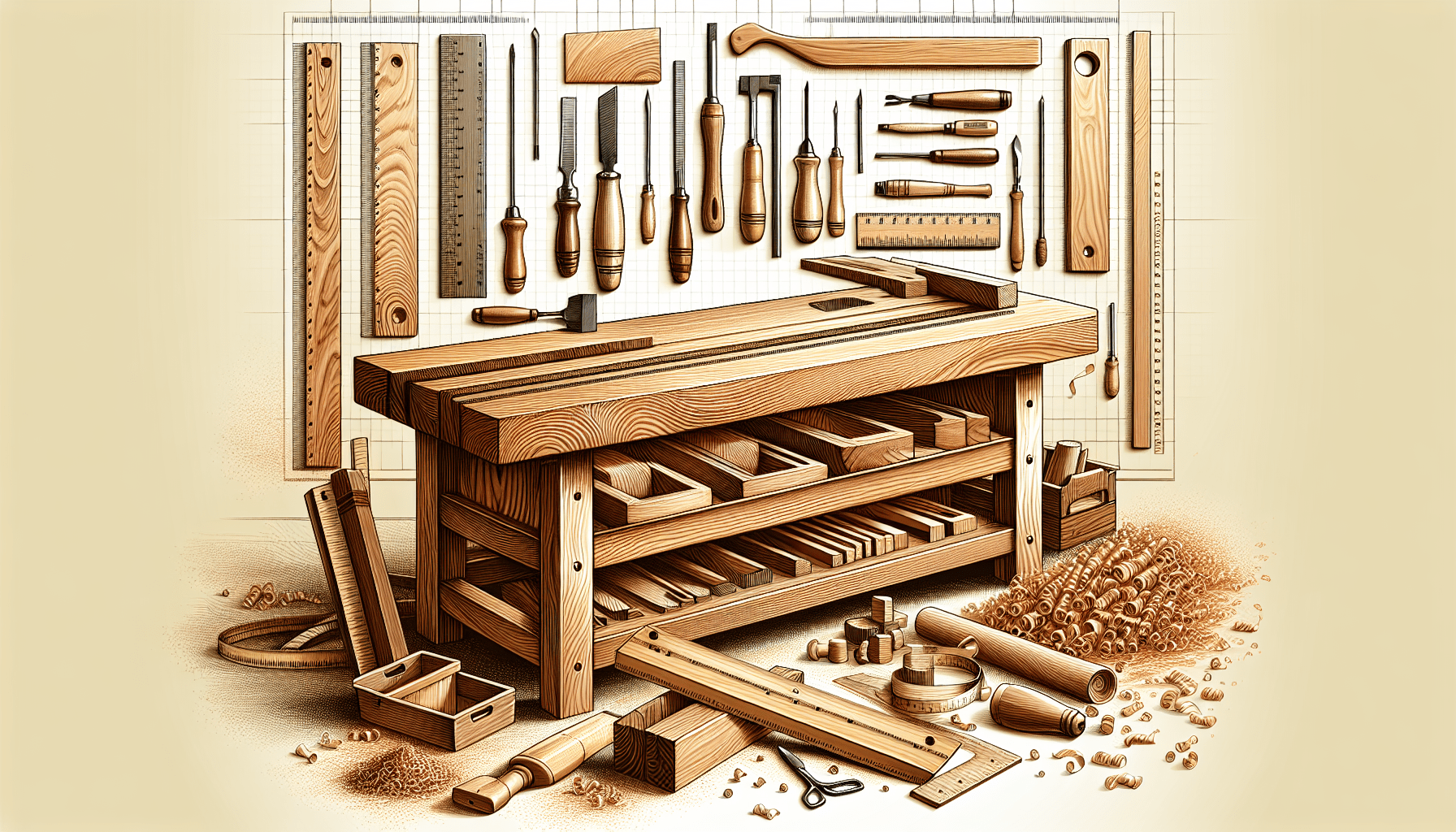Have you ever found yourself hunched over your woodworking bench, thinking that there must be a more comfortable way to work? You’re not alone. Many woodworkers face the challenge of finding the perfect bench height that neither strains their back nor compromises the quality of their work. In this article, we’ll dig into the factors that determine the ideal height for your woodworking bench, ensuring that you craft with both comfort and precision.
Understanding the Importance of Bench Height
You might wonder why bench height is such a big deal. Well, the height of your woodworking bench can significantly impact your efficiency, comfort, and the quality of your projects. A bench that’s too low can lead to back pain and fatigue, while one that’s too high might result in poor precision and control over your tools.
Ergonomics and Comfort
Imagine standing or sitting at your bench for hours on end. Ergonomics plays a crucial role in ensuring that your work setup supports your body’s natural posture. An ideal bench height lets your arms hang naturally, with your elbows at a comfortable angle. This setup helps minimize strain and maximizes comfort during extended woodworking sessions.
Precision and Control
When working on intricate designs or making precise cuts, control is key. A bench that’s too high or too low can make it difficult for you to wield your tools with accuracy. By setting the right bench height, you’re better able to focus on the details, ensuring that your projects turn out exactly as you envision.
Factors to Consider When Determining Bench Height

There’s no one-size-fits-all answer when it comes to bench height. Several factors influence what will be optimal for you. Let’s break these down:
Your Height
Your own height is a significant determinant of bench height. Taller individuals may need a higher bench, while shorter people might find a lower height more comfortable. Here’s a simple guide to illustrate:
| Your Height (ft) | Suggested Bench Height (in) |
|---|---|
| Under 5’4″ | 29 – 31 |
| 5’4″ – 5’10” | 32 – 34 |
| Over 5’10” | 35 – 37 |
Type of Work
Consider the kind of woodworking tasks you typically engage in. If you’re doing more detailed, intricate work like carving or fine joinery, a higher bench allows for better focus and precision. On the other hand, a lower bench might be more suitable for large-scale projects or those requiring hefty power tools, where leverage is important.
Hand Tool Usage
If you predominantly use hand tools in your woodworking, a bench height that allows your body to use these tools effectively is crucial. For these activities, your bench might need to be at waist level to provide the best leverage and control.
Power Tool Usage
Those who rely more on power tools might prefer a bench height slightly lower than waist level. This setup offers stability and control over larger equipment, reducing strain on your hands and arms.
How to Measure and Adjust Your Bench Height
Once you’ve considered the factors above, it’s time to measure and adjust your bench. Here’s how you can do it:
Step 1: Stand Naturally
Start by standing naturally with your arms relaxed at your sides. Measure the distance from the floor to your wrist. This measurement can serve as a good starting point for determining your bench height.
Step 2: Test the Height
Set your bench to the measured height and try performing a few typical woodworking tasks. Pay attention to how your back, arms, and shoulders feel. Are they comfortable, or do you notice any strain?
Step 3: Fine-Tune Adjustments
If you notice discomfort, adjust the bench height in small increments, either up or down, and retest. It may take a few adjustments to find the most comfortable position.
Step 4: Consider Adjustable Benches
If you anticipate needing different heights for different tasks or if multiple people use the same bench, you might consider investing in an adjustable height bench. These benches provide the flexibility to change your work surface height easily.
Common Bench Heights and Their Uses
While personal preference and individual factors are important, there are some common benchmarks (pun intended) for bench heights based on traditional woodworking practices:
Standard Bench Height
A common height you’ll encounter is around 34 inches. This is a good all-purpose height for most people, offering a balance between comfort and versatility.
High Bench
A bench height around 37 inches may be favored by those who do a lot of fine detail work or carving. At this height, you can work closely with intricate projects without having to bend over too much.
Low Bench
For tasks that require more force or leverage, such as planing large pieces of wood or using certain power tools, a lower bench around 30-32 inches might be more appropriate. This height allows you to apply more pressure without straining your body.
Conclusion
Finding the ideal height for your woodworking bench may take a little trial and error, but the effort is well worth it. A properly set-up bench not only enhances the quality of your work but also helps maintain your comfort and health over time. By considering your height, the type of work you engage in, and your tool usage, you’re well on your way to finding a bench height that perfectly suits your woodworking needs. So go ahead, adjust your setup, and enjoy crafting masterpieces in comfort and with precision.

